Still Fire
Salvaged incense cedar, eastern red oak, metal, wax, cotton rope, sand, ash
Installed in Baltimore, USA.
2025
The summer of 2021, British Columbia, Canada, was ablaze with forest fires that coated the sky a pulsing orange. As the smoke filled my lungs, I was transported by my sweat to a corporeal memory of smog-veiled summers with family in China. Vancouver should have never been similar to the climate of Ningbo, yet the results of global warming morbidly connected two roots in one place. Secretly, whilst the land I was born on was burning, I savoured the humid nostalgia for my mother’s land on my skin.
Wayfinding has always been more than the cardinal directions. Immigrants and children of immigrants need belonging beyond the bounds of the geopolitical East and West, the Global North and South. Still Fire, a monumental navigational sculpture, reminds us that home is not just a geographical pin but a phenomenological core. Centered with a candle wick encased in wax, its protective skin, the interior weathervane is able to burn slowly like a careful measurement of our impermanence.
The monument is installed in the center of the Mt. Royal Station Building, originally the waiting room of the train station. Its base is constructed of deciduous eastern red oak, local to Maryland, USA, whereas the top is carved out of evergreen incense cedar, salvaged from forest fires in the Pacific Northwest. Using yakisugi (“burned cedar”) wood preservation techniques, fire is mediated on the boards as an ephemeral presence which leaves the boards more resilient to future flames and outside elements.
The work is influenced by Buddhist principles: death as a natural cyclical transition, rebirth, and the transformation of the spirit. In the slow burn of a waxed wick, the dissipating vapors of a firework, the frozen ash of burnt offerings, or a homeland wildfire from afar, a matrilineal smoke is reckoned into existence. I surrender to fire as a companion which directs me.
A flame always returns upwards.
Wayfinding has always been more than the cardinal directions. Immigrants and children of immigrants need belonging beyond the bounds of the geopolitical East and West, the Global North and South. Still Fire, a monumental navigational sculpture, reminds us that home is not just a geographical pin but a phenomenological core. Centered with a candle wick encased in wax, its protective skin, the interior weathervane is able to burn slowly like a careful measurement of our impermanence.
The monument is installed in the center of the Mt. Royal Station Building, originally the waiting room of the train station. Its base is constructed of deciduous eastern red oak, local to Maryland, USA, whereas the top is carved out of evergreen incense cedar, salvaged from forest fires in the Pacific Northwest. Using yakisugi (“burned cedar”) wood preservation techniques, fire is mediated on the boards as an ephemeral presence which leaves the boards more resilient to future flames and outside elements.
The work is influenced by Buddhist principles: death as a natural cyclical transition, rebirth, and the transformation of the spirit. In the slow burn of a waxed wick, the dissipating vapors of a firework, the frozen ash of burnt offerings, or a homeland wildfire from afar, a matrilineal smoke is reckoned into existence. I surrender to fire as a companion which directs me.
A flame always returns upwards.


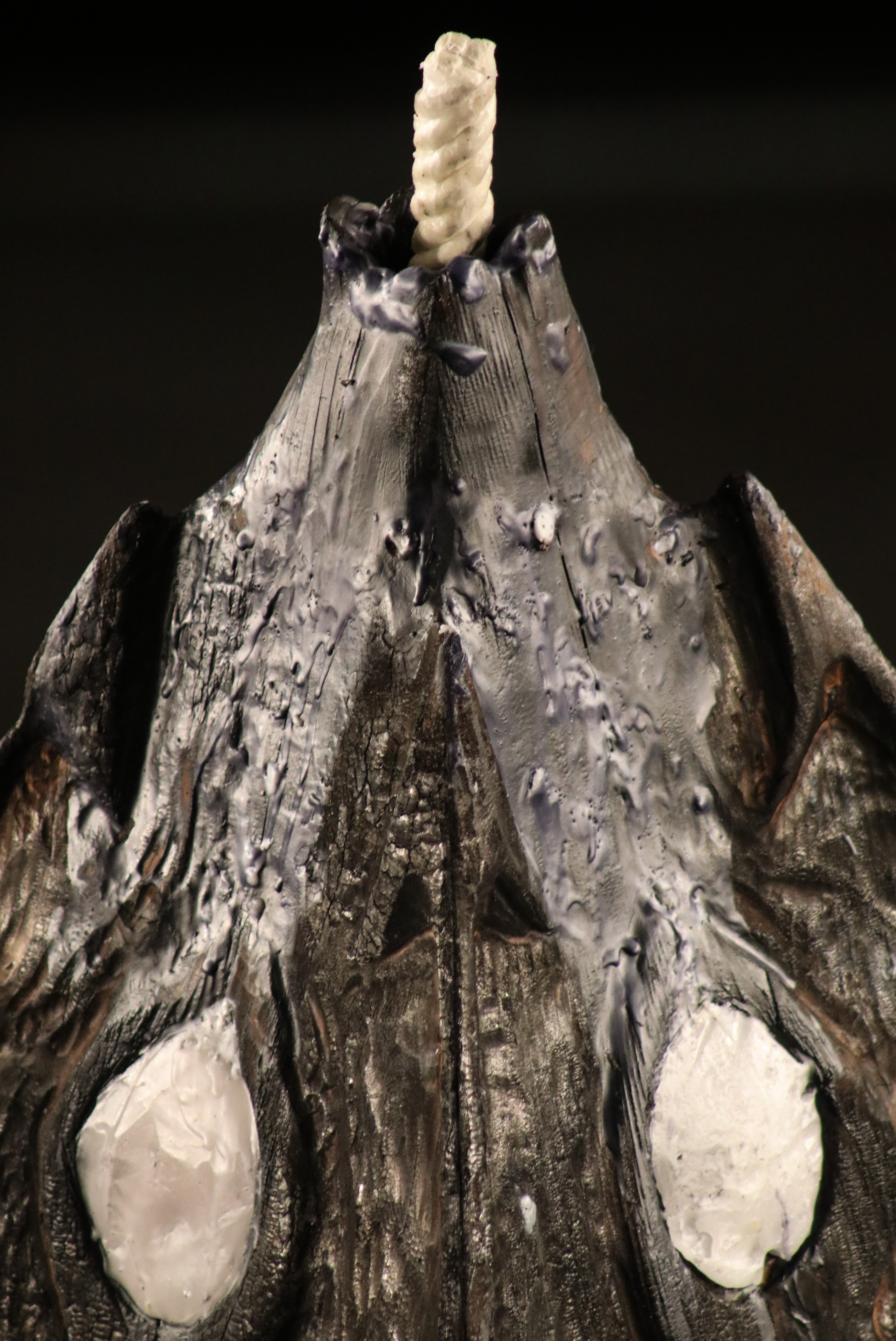
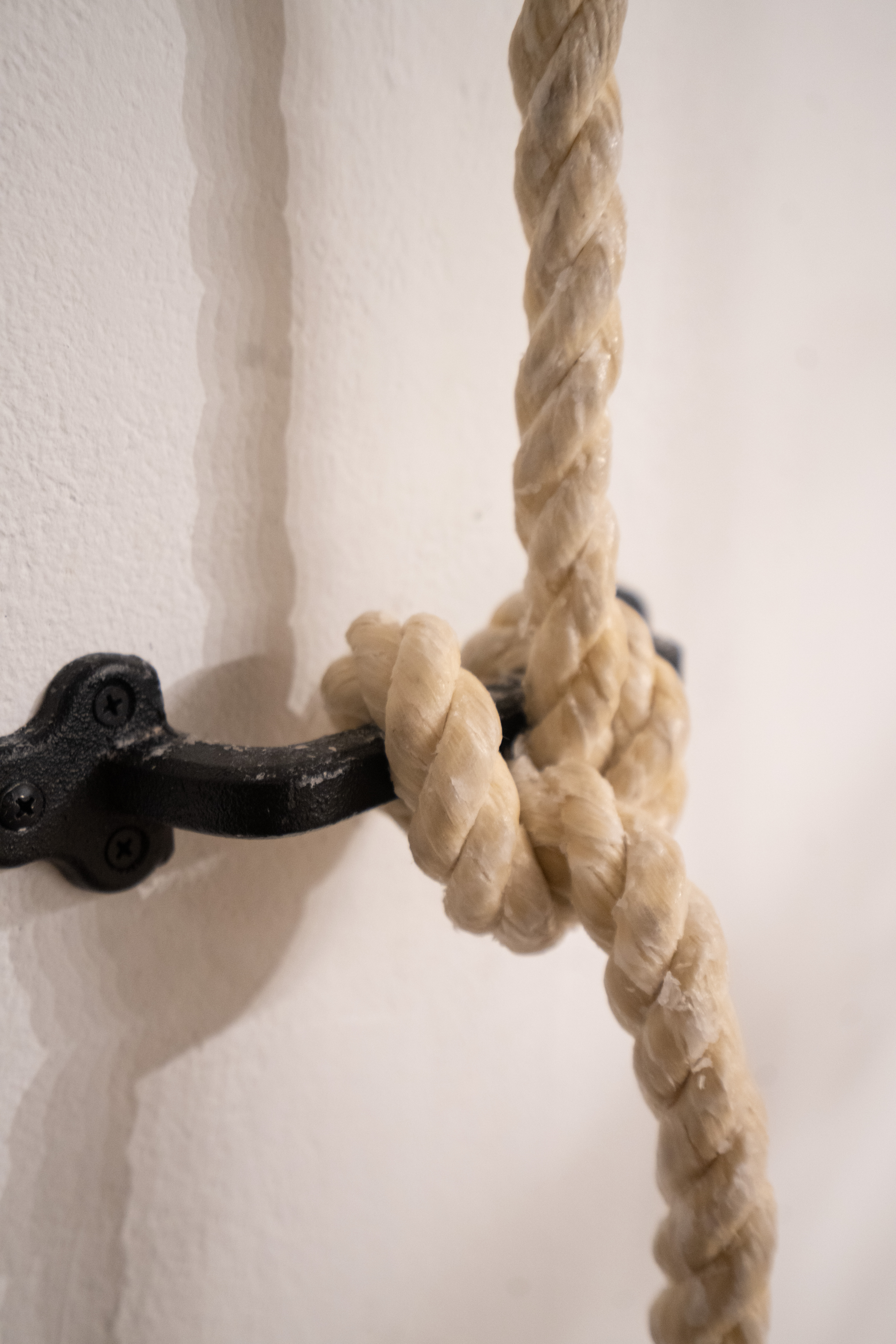
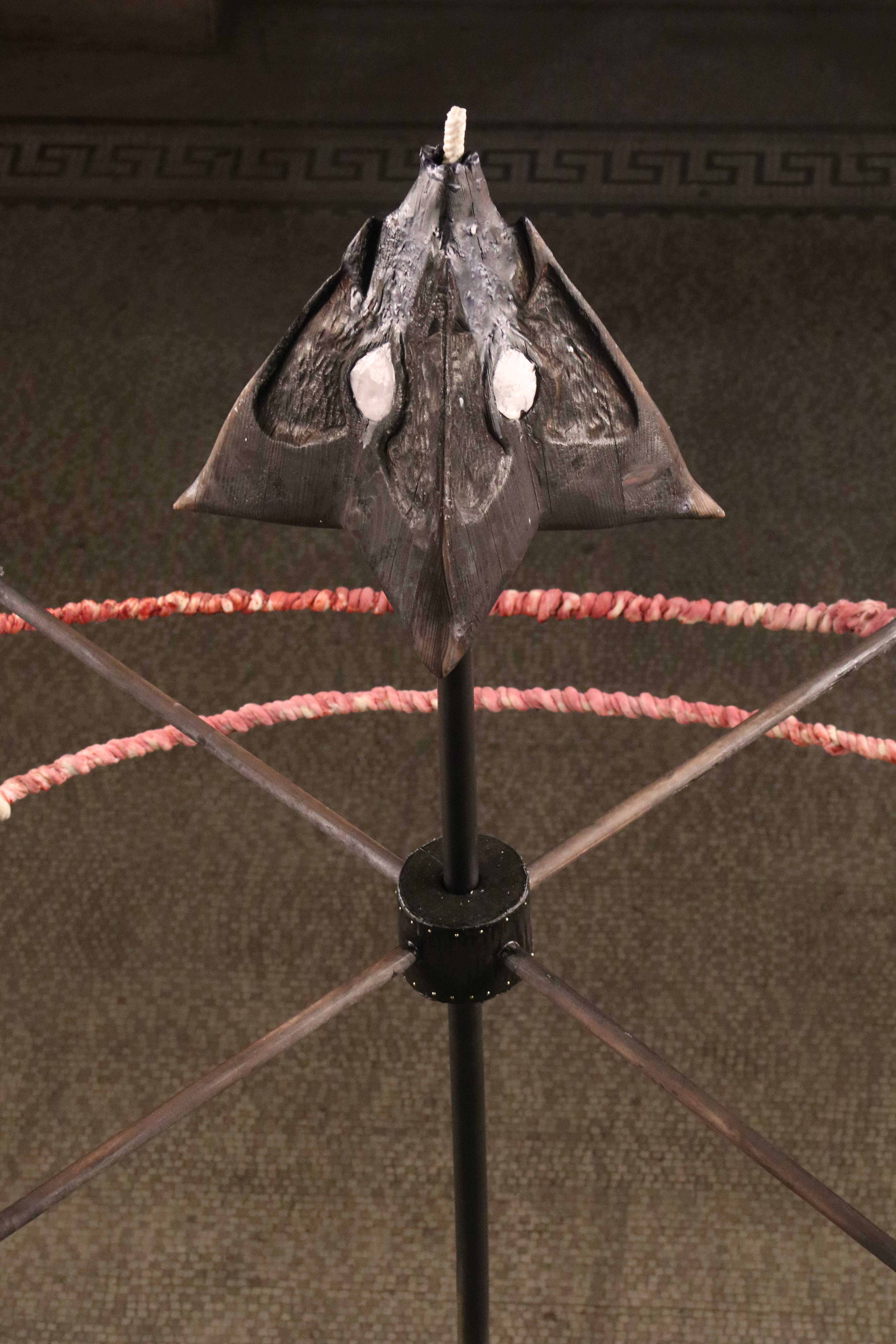

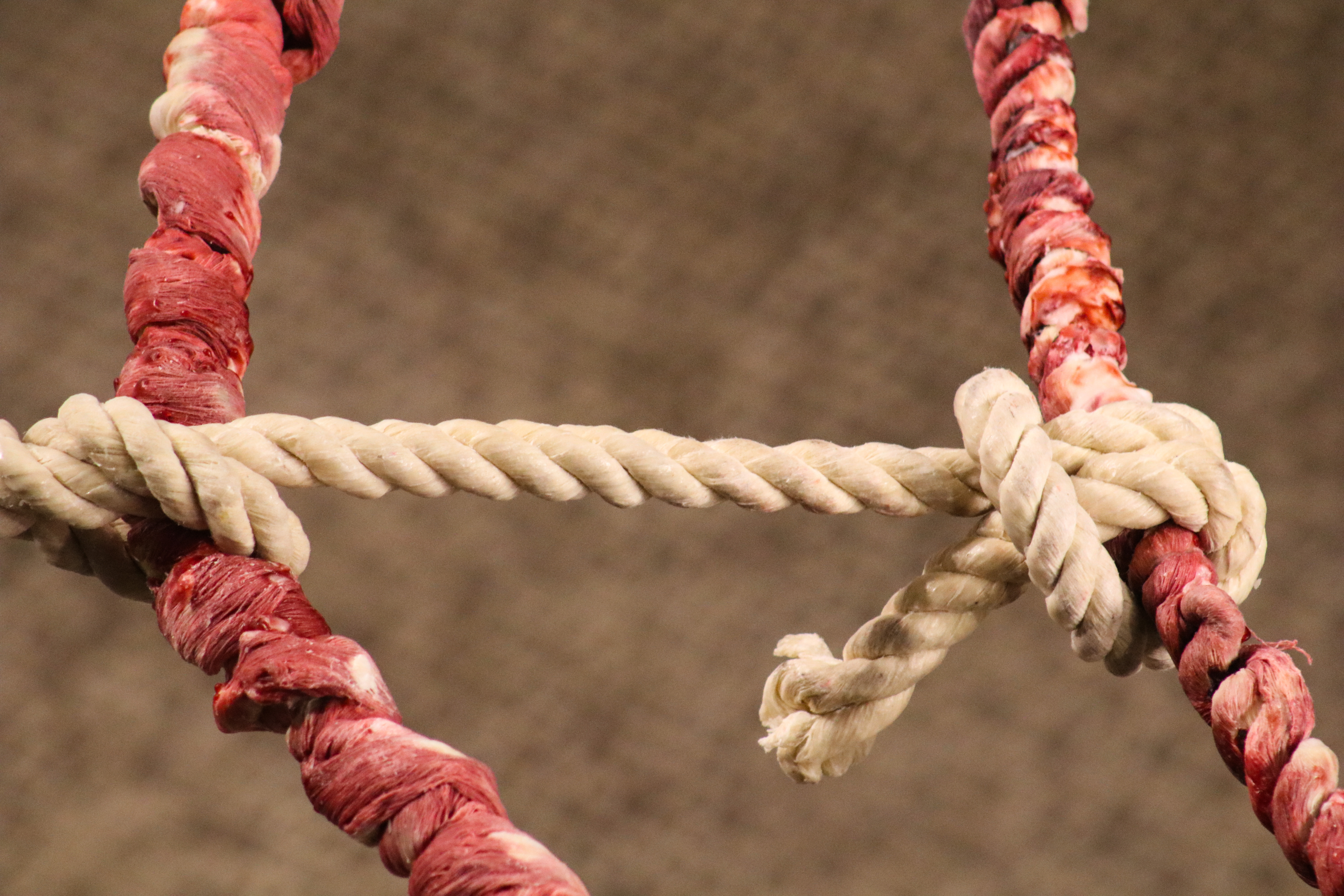
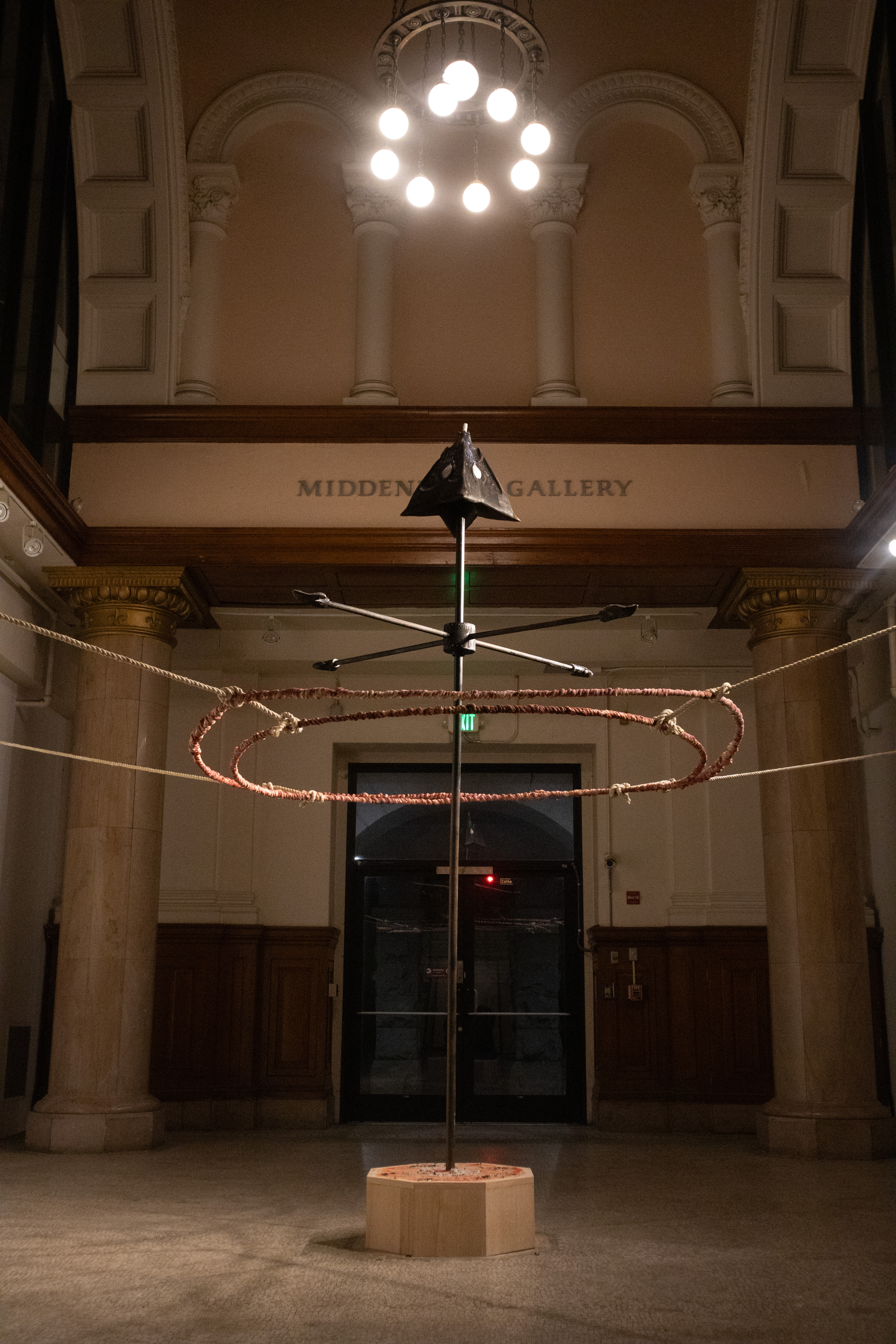
Photographed by Mathilde Mujanayi and Michelle Shengyu Li.

Selected Works
2025
The Sunset / Eternal Horizon
Still Fire
2024
Instrument
Long Time (Ginkgo)
Flight Speculation I — Exhaustion
Flight Speculation II — Anchoring
To Bury a Bird
1+1+1+1+1
In Response to Explanation
Visualization of a Wish
2023
Meditations I — my god is dark
“god’s eye” / “god in a seed” I
“god’s eye” / “god in a seed” II
Untitled (Portrait)
noon
First Touch
How To Make A Wish
still life
2022
Between Blood, Breath and Sea
(血脉,不息,守望)
Selected Exhibitions
Where the Light Blows (Solo Exhibition, 2024)
If Birds Could Fly: On Speculative Futurisms (Curatorial, 2024)
